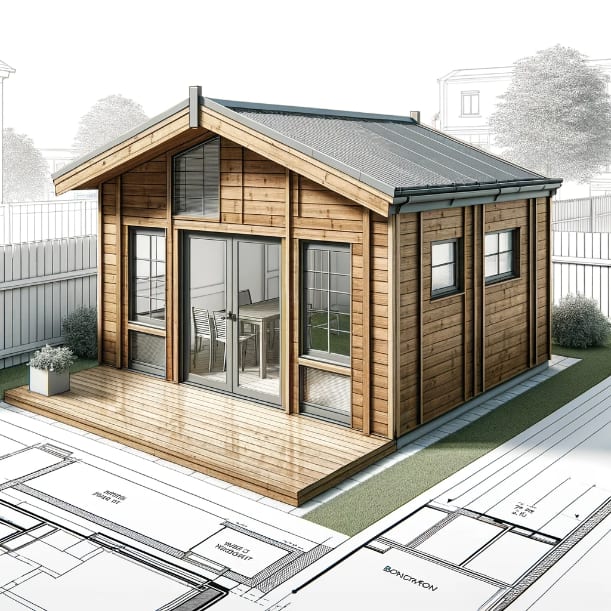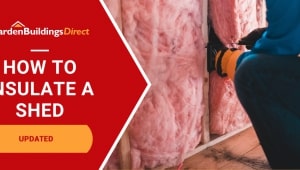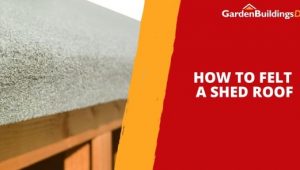Jump to:
Thinking of investing in a log cabin retreat soon? Though it doesn’t require planning permission, there are circumstances where it might. Read on to find out whether one applies to yours.
Note: This information applies to garden log cabins only. Different rules apply to residential log homes.
What Are the Requirements for Log Cabin Planning Permission in the UK?

Most garden log cabins fall under permitted development rights. Generally, they don’t need planning permission as long as they are within the size, height, and boundary limits. Now, if your log cabin is beyond these restrictions, you’ll need to apply to your Local Planning Authority (LPA).
If you need planning permission, it is best to prepare the following documents: proof of ownership, site plans, floor plans, application form, and any other documents your council requires. Always check with your LPA for their exact requirements, as this can vary.
How long does planning permission take?
Most householder planning applications are decided within 8 weeks. Bigger or more complicated applications may take a bit longer, up to 13 weeks. If your application isn’t approved, you’ve got options: tweak your plans and try again, or appeal the decision.
Your council can advise you on the next steps and what’s needed.
Do I Need Planning Permission for My Log Cabin?
Planning permission is not necessary if it meets the following criteria:
- Height & roof: The building must have eaves ≤ 2.5 m (above the natural ground) and a max overall height of 4.0 m (dual-pitched) or 3.0 m (other roofs). If any part is within 2 m of a boundary, max height is 2.5 m.
- Single storey. The log cabin must be single-storey and can’t have verandas, balconies, or raised platforms over 0.3 m high.
- Garden coverage. The log cabin must cover no more than 50% of the total area around your original house. Moreover, it can’t be built in front of the principal elevation.
Having obtained planning permission for another project in the past doesn’t exempt you from needing to obtain it again for a new development.
What are the exemptions?
Planning permission is needed for a garden cabin if it meets ANY of these:
- Is intended for self-contained accommodation (e.g. a rental or separate living space) or commercial use.
- Involves significant changes to existing buildings, such as demolishing walls.
- Is within the curtilage of a listed building.
On designated land (Areas of Outstanding Natural Beauty, National Parks, the Broads, World Heritage Sites), outbuildings to the side of the house require planning permission. If sited more than 20 m from the house on designated land, the total area covered by outbuildings must be ≤ 10 m² to avoid planning permission.
Building Regulations for garden log cabins
Building Regulations might apply to your log cabin even if you don’t need planning permission.
Log cabins over 15 m² can cause you to need to pay attention to the Building Regulations, even if you don’t need planning permission. These rules include concern for fire safety since log cabins are made of wood and can burn.
Here’s the simplified checklist:
- Your cabin is made of a combustible material
- It’s over 15 m² internal floor area (so, anything over a 5×3 metre cabin)
- You’re placing it less than one metre from your property boundary (very likely, as people usually want buildings at the edges)
When all 3 of these criteria are met, you have to get approval under the Building Regulations.
To get approval, you may have to install fire-resistant materials, extra spacing, or other measures to reduce risk. The easiest way would be to build more than 1 metre from your boundary.
If your cabin is going to be affected, check with your local authority to see what you’ll need to do to comply with the law.
If you plan to install electricity in a log cabin, these works have to satisfy Part P of the Building Regulations. The simplest way to achieve this is to hire a qualified and registered electrician to do it.
Round-up
It’s important to know the rules before building a log cabin. Most don’t require planning permission, but some do when they’re large, in a protected area, or for specific uses. Check in with your local council to ensure everything is in order.
Browse our range of log cabins for sale today. For guidance on choosing the right one, see our log cabin buying guide. Questions? Call us on 01909 768840—we’re happy to help.





